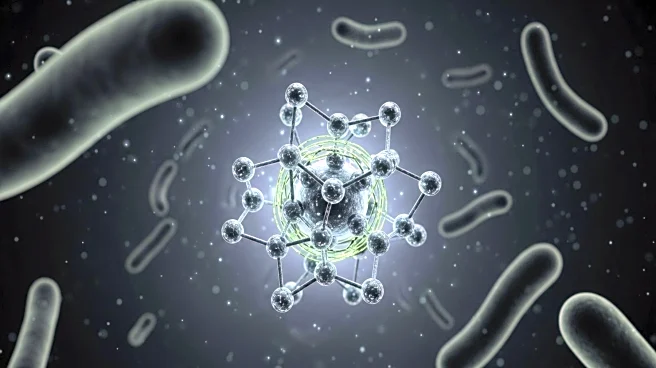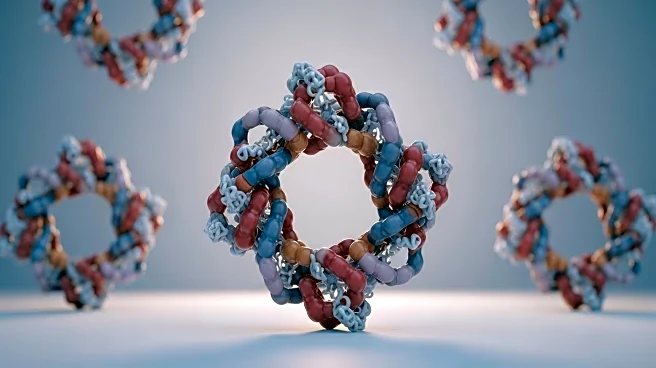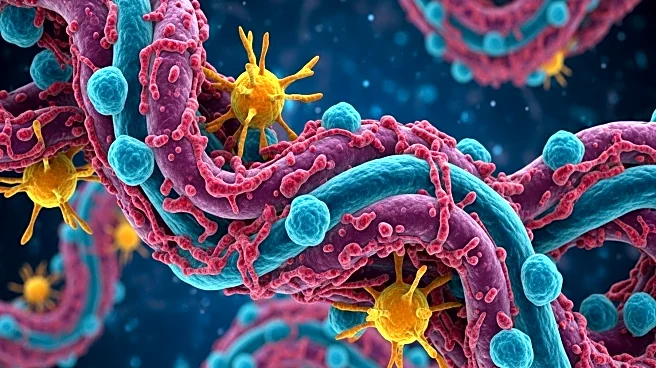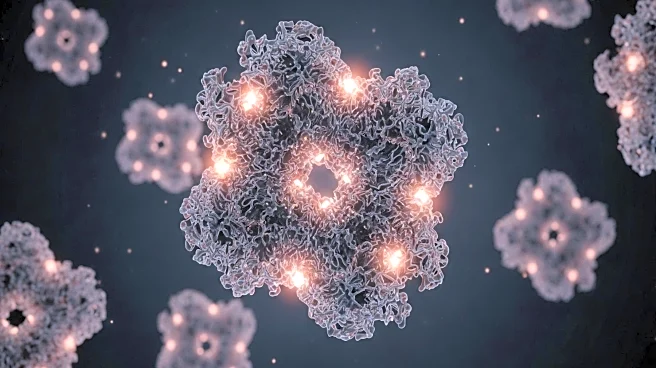What is the story about?
What's Happening?
Researchers at Scripps Research have published a study in PNAS detailing a new protein design approach that decodes sequence-structure relationships in transmembrane α-helix packing. This study focuses on the Gly-X6-Gly motif, which plays a crucial role in membrane protein structure and function. The research highlights the importance of understanding membrane protein folding and function for therapeutic targeting. The study's findings offer computational strategies to interpret and manipulate these proteins, which are vital for cellular transport, signaling, and communication. The research team, led by Marco Mravic, PhD, aims to design molecules that can directly target membrane proteins within cells, potentially leading to better therapies for diseases caused by protein malfunction.
Why It's Important?
The study conducted by Scripps Research is significant for the field of drug discovery and biotechnology. Membrane proteins are essential for various cellular functions, and their malfunction can lead to serious diseases, including cancer. By understanding the sequence-structure relationships of these proteins, researchers can develop more effective therapeutic interventions. This approach could accelerate the discovery of new drugs and improve existing treatments, offering hope for patients with diseases linked to membrane protein dysfunction. The research also underscores the potential for computational biology to revolutionize the understanding and manipulation of complex biological systems.
What's Next?
Following the study, the research team plans to design molecules that target membrane proteins within cells, aiming to improve therapeutic outcomes. This could lead to collaborations with pharmaceutical companies interested in developing new drugs based on these findings. Additionally, further research may explore the application of these design principles to other types of proteins, expanding the scope of potential therapeutic targets.
AI Generated Content
Do you find this article useful?













